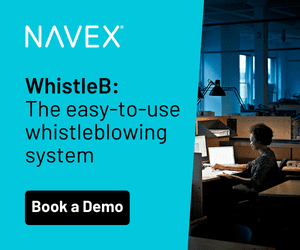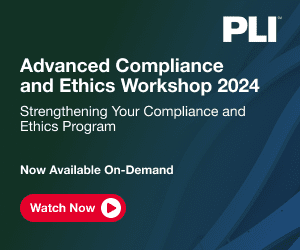As the global economy remains in flux, most risk management strategies remain backward-looking. Risk needs to adopt strategic resilience strategies if it is to stay abreast of the inevitable changes to come.
Winston Churchill’s observation, “However beautiful the strategy, you should occasionally look at the results,” takes on fresh meaning when nearly seven of 10 directors believe they need to strengthen the resiliency of their organizations.
A National Association of Corporate Directors’ survey conducted before the onset of the pandemic noted that a large majority of directors, almost 70 percent, believe their boards must strengthen their understanding of the risks and opportunities affecting company performance. A more recent survey conducted after the pandemic had disrupted markets for the better part of a year noted that “improved oversight of strategy is more critical than ever in this period of extreme uncertainty.” These findings allude to the struggle of companies and their boards to keep pace with fast-moving market developments that create or destroy enterprise value and frustrate the achievement of performance goals if not addressed in a timely manner.
Strategic resilience is likely at the root of the directors’ concerns due to three issues. First, there is the uncertainty around the pandemic and its impact on market behavior. Second, there is the current and post-pandemic competitive environment and sheer pace of change in the digital economy. Third, most performance metrics are retrospective in nature, recording history as it occurs and focusing on the question of “How we are doing?” instead of “Where are we going, and can we get there?” Metrics not linked to critical strategic assumptions or key execution risks inherent in the strategy may not provide sufficient reaction time for leaders to focus efforts on putting the strategy back on track to deliver expected results.
Strategic resilience is the capacity to turn threats into opportunities and the ability to take advantage of opportunities in a timely, non-crisis-like manner. That kind of resilience is possible only through continuously anticipating and adapting to market trends that can severely impair the earning power of the core business and consummating needed change before the case for change becomes perilously evident – which, in the digital economy, is too late.
This is why the ex post facto characteristics of the so-called lag metrics dominating performance management systems of many companies may be a contributing factor to directors’ concerns about keeping pace with changing markets. Alone, they’re not enough. As the underpinning of perpetual renewal, strategic resilience requires more forward-looking measures to monitor performance. Lead metrics are input-oriented, offer an earlier warning of emerging issues and are more susceptible to enabling needed change.
How to Adopt Strategic Resilience Practices
When linked to critical assumptions relating to external market factors and key risks relevant to the strategy, lead metrics offer an early warning of market opportunities as well as increased or emerging risks warranting immediate attention in the C-suite and boardroom. When coupled with tolerance levels linked to performance objectives and targets, these key risk indicators provide boundaries of acceptable outcomes related to achieving a business objective – that is, they feature both the upside boundary of exceeding the target and the downside boundary of trailing the target. When these boundaries are breached, they trigger management follow-up.
To illustrate, an organization with multiple operating units uses selected strategic documents and business plans to develop a profile of the critical risks around key strategic initiatives. The profile includes risks to the execution of the strategy as well as risks inherent in the strategy. In making this assessment, management considers plausible and extreme scenarios that could invalidate critical assumptions underlying the strategy. For scenarios having the greatest impact, key risk indicators, trending metrics and other relevant information are identified to facilitate monitoring processes and, for high-velocity scenarios, the development of response readiness plans.
For example, many of an organization’s most critical risks are driven, at least in part, by the digital economy. Performance monitoring is deficient from a strategic resilience standpoint if it doesn’t address signs the business model is decaying as circumstances change. That is why directors need to concern themselves with the lack of agility in keeping pace with changing market realities, including: the existence or threat of more nimble competitors, ensuring the company has the talent needed to compete and win long term in the digital age, addressing changing demographics and demand for new skills that are altering the workplace, managing the restrictive burden of significant technical debt constricting resilient response and engaging in out-of-the-box thinking about the business model’s continued relevance.
After confirming the risk profile with the executive team, conceptual alternatives for reporting on strategic execution are evaluated and an approach selected that addresses several objectives:
- Provide transparency into strategic execution risks;
- Augment quarterly strategic reviews to enable timely action to address risks to achievement of strategic goals and keep the company on track with strategic milestones;
- Identify signs of stress on the business; and
- Supplement the CEO’s periodic strategy updates and discussions with the board.
Based on the strategic risk profile, potential metrics are identified, with an emphasis on lead metrics. Not intended to replace the lag performance metrics currently in place, lead metrics are focused on trends and warning signs that the business model may be under threat from alternative offerings, losing its grip on customer loyalty, facing displacement by emerging technologies or impacted by other external factors affecting critical assumptions, indicating the strategy may be losing steam.
Working with owners of different aspects of the strategy, recommended metrics are reduced (by as much as 60 percent) to the vital few. Criteria such as availability, relevance (to strategic risks), criticality (the most important indicators) and practicality are considered in this process. With respect to availability, emphasis is placed on using metrics that already exist either formally or in shadow systems. With respect to criticality, less is regarded as more. As for practicality, the standard adopted is that a metric’s insights must merit its development costs.
Using these criteria, the metrics are narrowed down to a family of measures that are either currently available or can be tracked at reasonable cost. Working with key process owners, tolerances are developed to provide the foundation for a scorecard or dashboard that tracks whether actual performance is meeting or exceeding the target, short of the target within tolerance limits, or badly missing the target.
The metrics and underlying thresholds are used to develop indices for various risk categories to trend quarterly for use in communicating with the executive team and board. Trending reports should help answer three questions:
- Are we riskier this quarter than we were last quarter?
- Are we entering a riskier time in delivering our strategy?
- If so, why?
Because the indices are based on risk metrics, drill-down capability is available to answer the “why” question. The result is a reporting framework providing early warning alerts of increasing risk exposures or potential opportunities, indicating the need for management action.
The following questions apply to every organization and represent the ultimate measure of strategic resilience:
- When the company’s fundamentals change, which side of the change curve will it be on?
- Will it be facing a market exploitation opportunity or the need to react to a crisis precipitated by an obsolete strategy?
Time advantage is attained when the organization obtains knowledge of a unique market opportunity or an emerging risk. More important, it creates decision-making options for the company’s leaders, enabling them to act before that knowledge becomes widely known in the market. Using forward-looking reporting linked to the strategy, companies are able to function as “early movers” and see change on the horizon as a potential market opportunity rather than a looming crisis.
Questions for Executive Teams and Boards
Following are suggested questions senior executives and boards of directors may consider, based on the risks inherent in the company’s operations:
- Are we assessing the company’s execution of strategy in a comprehensive manner with a forward-looking discipline linked to critical strategic assumptions and risks? Are strategic execution monitoring and actionable early-warning capabilities in place that inform management promptly of new market developments?
- Are these capabilities working effectively to inform strategic decision-making? Is management setting the tone for strategic resilience through actions and words emphasizing the importance of improving digital readiness, staying close to the customer with focused data analytics, keeping an eye on relevant market trends, organizing for speed and embracing change? Is the tone in the middle aligned with the tone at the top?
- Would we characterize the company’s decision-making processes as “high-velocity, high-quality?” For example, does the process keep things simple, flatten the organization and emphasize taking appropriate risks, failing fast and listening to feedback?



 Jim DeLoach, a founding
Jim DeLoach, a founding 









